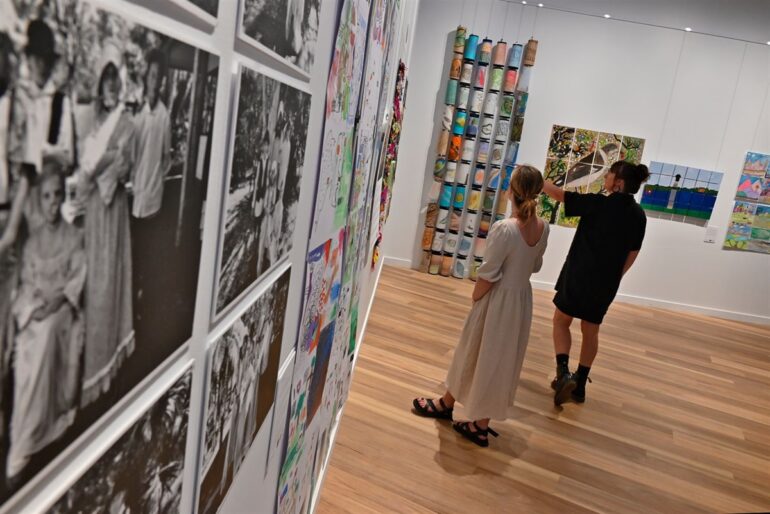by Karen Walker, University of Virginia School of Engineering and Applied Science
In the video game Minecraft, everything including animals and characters is made of small 3D blocks called voxels. Materials scientists at the University of Virginia School of Engineering and Applied Science have developed a Minecraft-like, voxelated approach that uses droplets as the basic building blocks to create complicated structures comparable to human tissues and organs.
Liheng Cai, an assistant professor of materials science and engineering, chemical engineering and biomedical engineering, leads the team. Jinchang Zhu, a Ph.D. student in Cai’s Soft Biomatter Laboratory, develops their bioprinting technique, digital assembly of spherical bio-ink particles (DASP).
“In principle, DASP allows us to precisely define the location, composition and properties of individual droplets and assemble them into 3D constructs that match the artistry of biological tissues,” Zhu said.
Using a customized 3D printer, the team extrudes and deposits bio-ink droplets inside a supporting matrix, a slurry bath that supports and holds the droplets in 3D space. The droplets swell up, come into contact with their neighboring droplets, and then solidify to form a 3D lattice structure. With combinations of droplets made of various materials or encapsulated with various components, DASP shows a large number of possibilities for designing and creating functional tissue constructs.
Zhu first-authored the team’s original paper published October 2021 in Advanced Functional Materials, where Cai and his collaborators proved the concept of voxelated bioprinting.
“The paper we published last year was a first step toward 3D printing tissue with the complexity and organization needed for biomedical engineering, drug screening and disease modeling,” Cai said.
Zhu and Cai were invited to share their latest research, All-aqueous Printing of Viscoelastic Droplets in Yield-stress Fluids, in a September 2022 special issue of Acta Biomaterialia.
In this most recent paper, they explain the mechanism for manipulating a viscoelastic droplet in what’s called a yield-stress supporting matrix: The supporting matrix behaves like a pile of sand, which is like a solid when left undisturbed but flows like a liquid under stress.
One unique feature of this whole printing process is that both the bio-ink droplets and the supporting matrix are aqueous; there is virtually no tension at the boundaries between the droplets and the surrounding environment. The bio-ink is highly viscous like honey, but is elastic when being deformed at fast rates.
Zhu and Cai monitor the dynamics of the whole bioprinting process in real time and identify three involved stages: drop generation, detachment and relaxation. As the droplet is extruded, the nozzle moves horizontally at a high acceleration to detach from the droplet, leaving the droplet behind and trapped inside the supporting matrix.
“An analogous case is the classical tablecloth-pulling trick, in which the tablecloth is pulled away suddenly, leaving plates on the table due to inertia force,” Zhu said, “But in our technique, the droplet is detached from the nozzle mostly due to the confinement force from the supporting matrix.”
The team also identified parameters that largely affect the printing resolution including the droplet diameter, nozzle diameter and nozzle acceleration. Their experiments indicate that printing droplets of good fidelity requires a relatively large droplet-to-nozzle diameter ratio and a suitable nozzle acceleration up to ten meters per square second.
“Precise manipulation of viscoelastic voxels represents both a fundamental and technological challenge in soft matter science and 3D bioprinting,” Cai said. “We are just at the beginning to establish the foundational science for voxelated bioprinting. And we hope one day we can completely translate the Minecraft approach to 3D bioprinting, such that we can create highly functional 3D tissue mimics for basic and applied biomedicines.”
More information:
Jinchang Zhu et al, All-aqueous printing of viscoelastic droplets in yield-stress fluids, Acta Biomaterialia (2022). DOI: 10.1016/j.actbio.2022.09.031
Provided by
University of Virginia School of Engineering and Applied Science
Citation:
Engineering researchers strive to match artistry of biological tissues (2022, November 16)
